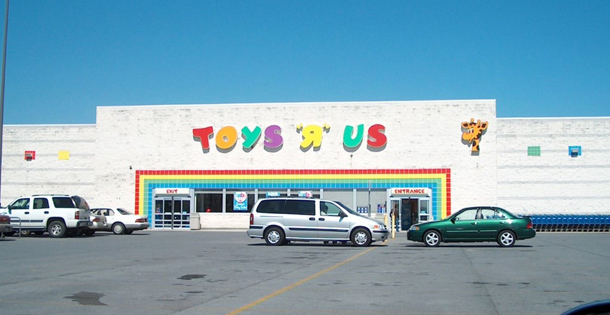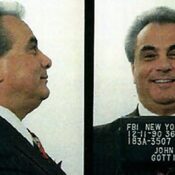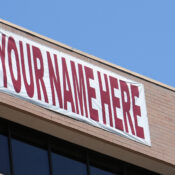Toys R Us closed for good in the United States on Friday, June 29. Many proclaimed it was the end of an era. In a way, it was; plenty of adults have fond memories of shopping there as children, or taking their own children to the self-proclaimed world’s biggest toy store. The outpouring of sorrow raises the question of why Toys R Us mattered so much to such a diverse cross-section of people. As you might imagine, it wasn’t just toys.
The first official Toys R Us opened in Maryland in 1957. A spin-off of the earlier Children’s Supermart furniture store founded by Charles Lazarus, TRU evolved from an increasing customer demand for toys at the various locations. The familiar logo was created by Lazarus himself, the backward “R” meant to look as if a child had written the phrase.
Toys R Us truly peaked near the end of the 1980s. Mitt Romney, then managing partner at Bain Venture Capital, referred to the store as a “category killer” — a business so good at its specialty area that it essentially wiped out the competition, as Toys R Us did with Children’s Palace, Child World, Lionel Kiddie City, and others.
But what made Toys R Us get so big? A combination of factors outside the store itself fed in a brand awareness that made it iconic. Perhaps the most recognizable is Geoffrey the Giraffe. The store’s mascot debuted in ‘50s print ads as “Dr. G. Raffe” before evolving into Geoffrey. He gave the store a focal point for small children while also conveying the idea that the store was in fact big enough to have a mascot, comparable to a sports franchise or college.
Then, there was that jingle. You know that an advertising phrase has solidly entered the popular vernacular when practically anyone can finish it. If you sing, “I don’t want to grow up . . .”, then chances are someone nearby will finish with “I’m a Toys R Us kid.” Linda Kaplan Thaler wrote the song while working for the J. Walter Thompson Ad Agency in the early ‘80s. The “I’m a Toys R Us kid” slogan was supplied by her co-worker, James Patterson. Yes, THAT James Patterson.
https://youtu.be/VJJ-ZLdrTwY
A Toys R Us commercial from 1982, featuring three pre-fame TRU kids: musician Jenny Lewis, actress Lindsay Price, and Jaleel “Urkel” White.
Toys R Us made another huge impression in kids’ pop culture with a promotion that’s become a collectible. Across the top of the cover for every Marvel Comics title dated October 1980 (which hit stores that August), there ran a banner ad for a Toys R Us shopping spree contest. For many without a store in their hometown, that was the first time that they learned that Toys R Us even existed. The banner ad ran paired with a full page ad and entry on the inside of each comic. The ad ran on some of the biggest comics of that year, including Star Wars #40 (part two of the comic’s adaptation of The Empire Strikes Back), X-Men #138 (the funeral of Phoenix, the epilogue to a hugely popular and controversial eight-part story), and the double-sized 200th issue of The Avengers.
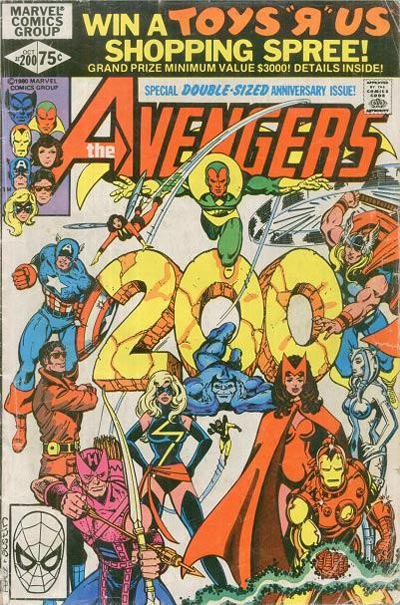
But those were all elements that conspired to get the kids into the store. Once you were actually inside, that trip left an impression. Whereas regular department stores might devote a few aisles to toys, the entirety of the TRU floorplan catered to kids. For years, that included the “game wall,” a massive, alphabetically arranged board game section that frequently appeared on one wall of the store. The larger shelving structure and tall overstock shelves above the reachable merchandise gave the wall the appearance of a fairy tale library.
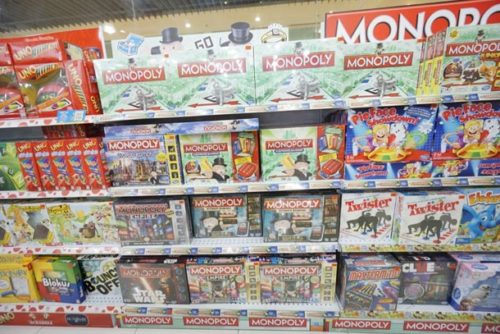
Those tall overstocks continued into the regular aisles, making each corridor seem like a castle hallway to tiny visitors. Size can’t be underestimated in terms of the store’s appeal. It just had more of everything, including brands and lines that big box stores might not have been able to stock due to space limitations. Toy expert Daniel Pickett of ActionFigureInsider.com says, “Toys R Us, because of the square footage they needed to fill in each store, would take chances on new companies and new toys.”
This commitment to “more of everything” was most dramatically illustrated by the bicycle and ride-on sections. Toys R Us also emphasized particular categories in terms of location within the store. No matter what store you were in, action figures were always in aisle 7C. The “Barbie aisle” was spotted easily with its sea of pink packaging elements. Lego sections may have varied between stores, but they frequently had mid-aisle displays and cases featuring assembled products.
The chain also moved relatively quickly to stock items that created a buzz with the public. As Pickett explains, “They allowed so many new companies and products to come into the market. They actually sought them out.” Toys R Us stores at various periods carried things like role-playing game supplies, up-to-date modeling gear, Remote Control racing equipment and accessories, and more. When video games resurged with Nintendo, TRU got on top of it and was prepared to ride the subsequent tides created by Playstation and Xbox.
It might be hard to remember now, but Toys R Us also evoked the feel of destination shopping. A child might get a toy on a trip to another store while shopping for clothes or groceries, but you went to Toys R us for toys. That in itself carries a certain kind of fond remembrance. The trip itself wasn’t just shopping; it was a special thing.
In both life and commerce, nothing lasts forever. Toys R Us came to an end from a collision of well-reported circumstances that includes debt, poor management decisions, competition from other retailers, and the rise of shopping online. Interestingly, a message on the TRU Facebook page promises a “new chapter” for the brand, including the hashtag #TRUBeContinued. Even if the store does return in some form, it’s hard to imagine it would be the icon it once was for the previous generations of Toys R Us kids.
Become a Saturday Evening Post member and enjoy unlimited access. Subscribe now
